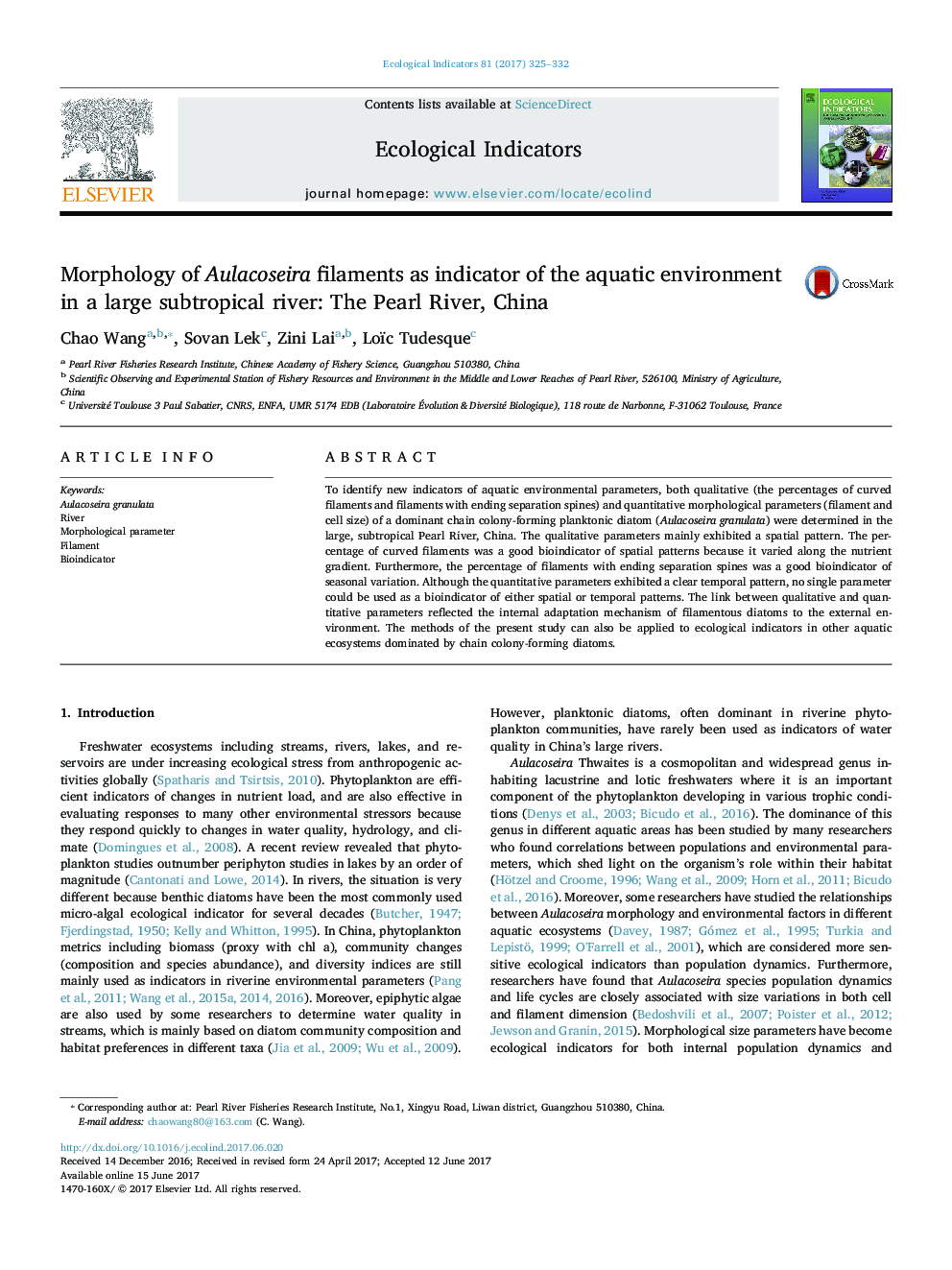| Article ID | Journal | Published Year | Pages | File Type |
|---|---|---|---|---|
| 5741437 | Ecological Indicators | 2017 | 8 Pages |
â¢Both qualitative and quantitative morphological parameters of a dominant chain colony-forming planktonic diatom (Aulacoseira granulata) were determined as bioindicators in a large subtropical river.â¢The percentage of curved filaments was a good bioindicator of spatial patterns, and the percentage of filaments with ending separation spines was a good bioindicator of seasonal variation.â¢Although the quantitative parameters exhibited a clear temporal pattern, no single parameter was a good indicator of the aquatic environment.
To identify new indicators of aquatic environmental parameters, both qualitative (the percentages of curved filaments and filaments with ending separation spines) and quantitative morphological parameters (filament and cell size) of a dominant chain colony-forming planktonic diatom (Aulacoseira granulata) were determined in the large, subtropical Pearl River, China. The qualitative parameters mainly exhibited a spatial pattern. The percentage of curved filaments was a good bioindicator of spatial patterns because it varied along the nutrient gradient. Furthermore, the percentage of filaments with ending separation spines was a good bioindicator of seasonal variation. Although the quantitative parameters exhibited a clear temporal pattern, no single parameter could be used as a bioindicator of either spatial or temporal patterns. The link between qualitative and quantitative parameters reflected the internal adaptation mechanism of filamentous diatoms to the external environment. The methods of the present study can also be applied to ecological indicators in other aquatic ecosystems dominated by chain colony-forming diatoms.
